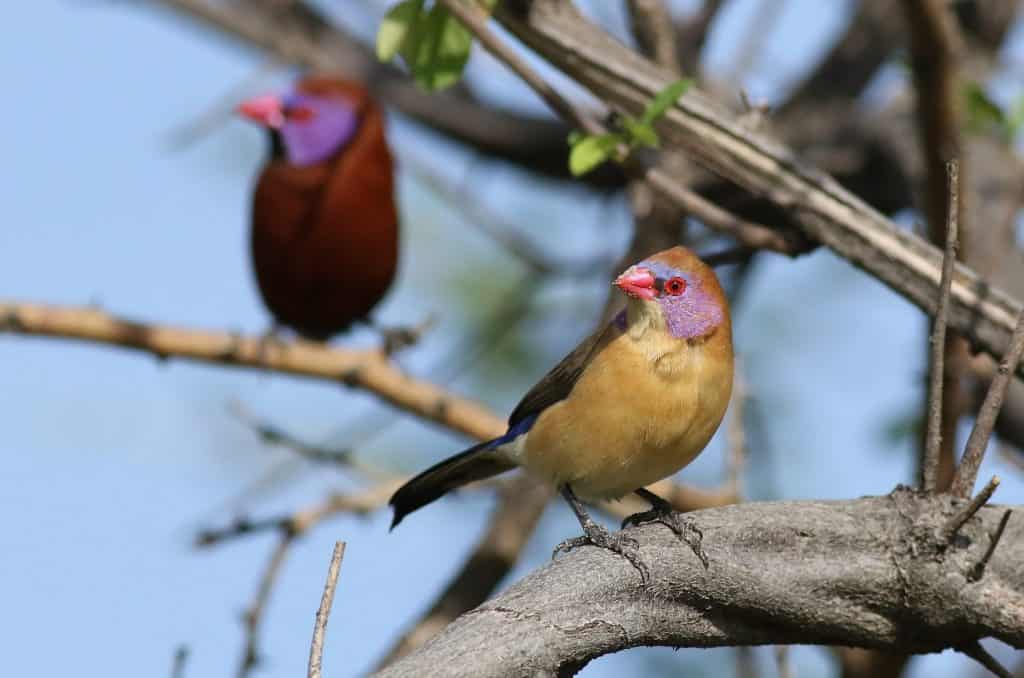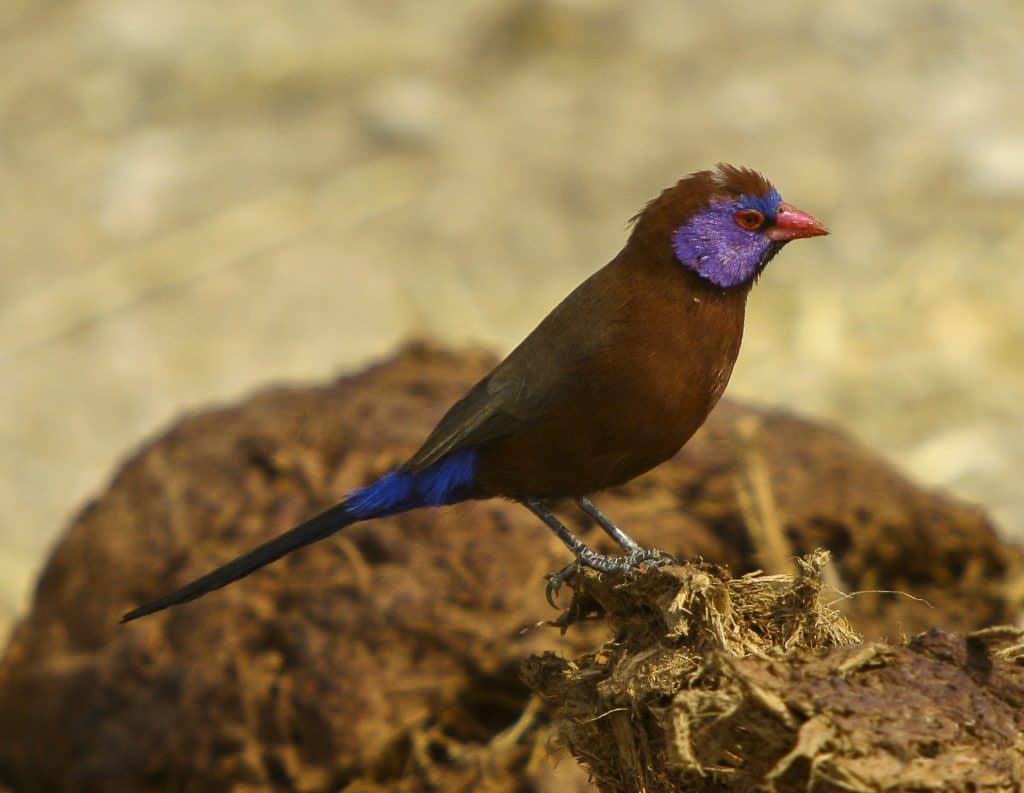The Violet Eared Waxbill is also known as the Common Grenadier and is a member of the same family as other eye catching finches such as the Purple Grenadier and the Blue cap waxbills. With its distinctive purple face and rump, it is an easy to distinguish bird and also one that tends to be kept and bred by more established finch breeders.
In the wild
In its wild habitat, the violet eared waxbill (Uraeginthus granatinus) is a relatively common bird. It lives in tropical and subtropical dry shrub land and savannah areas across Southern Africa including Angola, Botswana, South Africa and Zimbabwe. It is a species of Least Concern so the population is stable and breeding is successful, unlike some of its cousins.
They tend to live in areas with dry thorn brush and open acacia woods where there is low growth. They live in pairs and forage for food on the ground, usually consisting of small seeds and insects.
Description
The genus is a member of the Estrildid family of exotic finches and also contains four other species: the blue waxbill, the purple grenadier, the red-cheeked cordon bleu and the blue capped cordon bleu or blue capped waxbill. All of the birds are pretty eye catching with their purple and blue colouration.
These birds are around 5 ½ inches in length with the male having a chestnut brown body. Thy have a cobalt blue band across the forehead and deep violet cheek patches with a black throat and blue-purple rump. The female has a narrower and paler band on the forehead and the cheek patches are lighter in shade while the throat is light brown. The beak is bright red and there is a bright red ring around the eye.

Keeping the violet eared waxbill
One of the first things to know about violet eared waxbills is that they require good heat levels to survive here in the UK and other northern hemisphere countries. Because they are southern African birds, they are built for their native climate and need heat to survive even cooler times of year. Birds bred in this country might be a little hardier but not worth taking a chance.
In terms of accommodation, you can keep them in larger cages depending on how they were bred. Often, birds that have been cage bred will be fine in cages while others who have been bred in an aviary won’t easily settle in a cage. Whatever the accommodation, don’t keep them with others of their species or any of the birds from the same family as they can be territorial.

There are now plenty of good waxbills mixes available that offer a diet more in line with their natural one and you can add to this millet sprays, half ripe grass seeds and some weeds such as dandelion and chickweed. They also eat small insects such as waxworms and frozen pinkie worms as well as small spiders. They need plenty of protein to be healthy and also to rear their young.
Breeding
In the wild, these birds make round shaped nests in thorn bushes that are lined with feathers and 3-5 eggs laid. They are brood hosts for the Shaft-tailed Whydah, raising the chicks as if they were their own. Both birds incubate the eggs and the cock sometimes brings a feather to the hen when he replaced her, as a gift of sorts.
In captivity, these birds will usually breed in the spring and will use nest boxes or build their own nests with coconut fibre, dry grasses and white feathers. The chicks have black skin when they hatch after around 13 days’ incubation and will need plenty of live food in order to be healthy.
Parents tend to sit on chicks only for the first five days or so, another reason why a good temperature is crucial. When the chicks fledge at around three weeks, make sure they have somewhere warm and safe for the first few nights as they don’t return to the best.
Young birds moult to their adult plumage at around 24-35 days of age. This is when they should be separated to avoid siblings bonding.

3.5
5